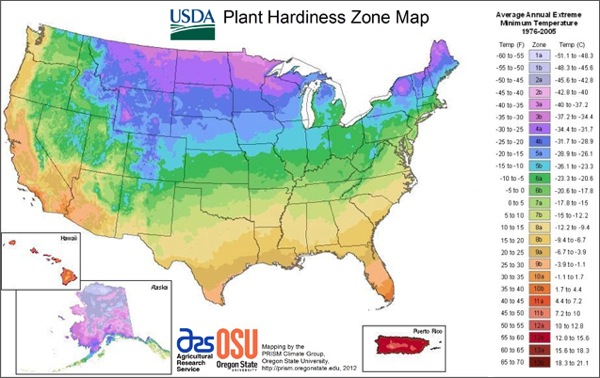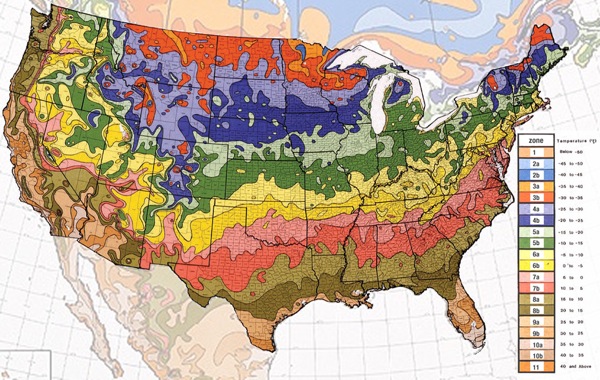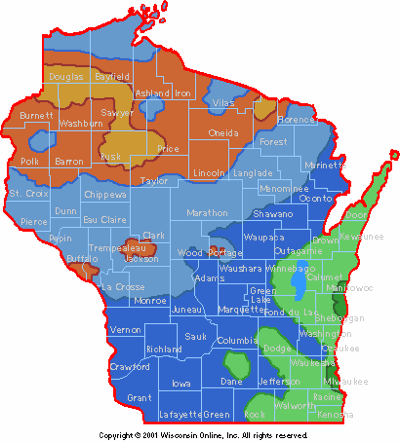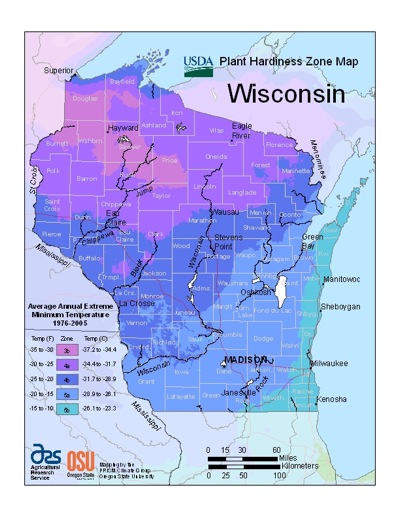The USDA released an updated plant hardiness zone map Wednesday and for many people it shows what a lot of people have been thinking (but maybe thought they were imagining): it’s getting warmer out there.
Maybe less cold is a better way to describe it, since the plant hardiness zone map is based on minimum temperatures.
Much of the country has been experiencing an unusually warm winter so far and Wisconsin has been no exception. And as much as I’m thoroughly enjoying the relative lack of snow (we had none until two weeks ago and we’ve probably only had a total of 6 inches or so) and the mild temperatures (we only had three days of sub-15-degree temps, which is extremely unusual here), I’m also a little worried. This is just not right.
I know that everyone talks about the winters of their childhood (well, everyone in the northern part of the country does at least) being different. I know I remember massive snow forts and a snow pile that allowed us to walk up to the top of the 6-foot fence on the edge of our yard. We had a lot of snow last year, but nothing along the lines of that. So I definitely do feel that in general, winters here are warmer than they used to be. I also sort of feel like the seasons are shifting (i.e. September used to be the start of autumn but now it really feels like the nicest month of summer and spring doesn’t come until May at the earliest) but that’s a crazy theory for another time.
Here’s what the new USDA plant hardiness map looks like:

You can click here to go to a clickable version of the map that will blow up your state so you can see exactly where you land.
Here’s what it used to look like:

If you look closely, a lot of the zones seems to have slipped north and many of us find ourselves in a half (or more) zone warmer.
Here’s what Wisconsin’s zone map used to look like:

And here’s what it looks like now:

There used to be a zone 4 “thumb” that stuck into southeastern Wisconsin, almost all the way to the lake and now that is gone completely. The entire Lake Michigan coastline is now zone 5b.
So what does this mean to gardeners? On a small scale, probably not a lot. Nurseries and plant companies tend to be big zone pushers to begin with: On more than one occasion I’ve brought a plant home from a nursery only to read up on it some more and find that it is really only zoned to zone 6 (which is nowhere to be found around here, even now) and even though under the old zone map I was more likely to be shopping in a nursery closer to zone 4 than zone 5b, there were far more zone 5 plants than zone 4 plants. I have a few zone pushers in my garden, and most of them have been purchased with the knowledge that they will need a very special spot protected from winter winds and a lot of help from me in the form of protection. Some live, some die, as is the way with plants. I guess I’ll know feel a little more comfortable with my zone pushers, but I bet it won’t be long before nurseries start routinely stocking zone 6 plants because honestly, they will make it through a lot of winters, but some year we will have a winter like we used to have, and then we’ll all be crying about the loss in our gardens.
How will your garden be affected by the zone map change? Will you change your buying habits? Are you excited to have the USDA’s “OK” to plant some great things you’ve wished you could plant all along?
